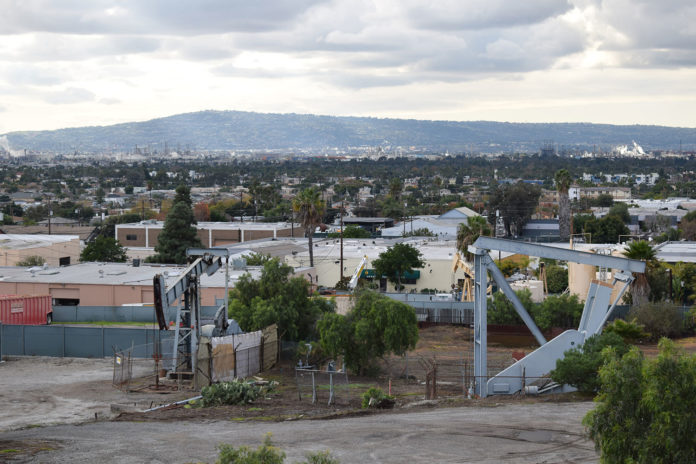Many studies have reported the link between residential proximity to upstream oil and gas production and the risk of adverse health outcomes. A new study by Stanford scientists conducted a 14-year analysis of air quality across California. They found higher levels of air pollutants within 2.5 miles of oil and gas wells, likely worsening negative health outcomes for nearby residents.
Along with atmospheric data, scientists analyzed local air quality measurements. They noticed that oil and gas wells emit toxic particulate matter (PM2.5), carbon monoxide, nitrous oxide, ozone, and volatile organic compounds (VOCs).
The study aligns with other smaller-scale studies that have measured emissions from a handful of wells. At least two million Californians live within one mile of an active oil or gas well.
Senior study author Marshall Burke, an associate professor of Earth system science at Stanford‘s School of Earth, Energy & Environmental Sciences (Stanford Earth), said, “It’s really hard to show air quality impacts of activity like oil and gas production at a population scale, but that’s the scale we need to be able to infer health impacts. While it’s not necessarily surprising that drilling and operating oil and gas wells emit air pollutants, knowing the magnitude of the effect improves our broader understanding of who is exposed to what and how to intervene to improve health outcomes.”
When a new well is being drilled or reaches 100 barrels of production per day, the deadly particle pollution known as PM2.5 increases two micrograms per cubic meter about a mile away from the site. Exposure to one additional microgram per meter cubed of PM2.5 increases the risk of death from COVID-19 by 11 percent.
Gonzalez said, “We started in 2006 because that’s when local agencies started reporting PM2.5 concentrations. We’re very concerned about the particulate matter because it’s a leading global killer.”
Scientists assessed almost 1 million daily observations from 314 EPA Air Quality System monitors in production between 2006 and 2019. By using an econometric model, they determined if the pollutants were coming from the wells.
Gonzalez said, “Sometimes the wind is blowing from the well, sometimes it’s not, and we found significantly higher pollution on days when the wind is blowing from the wells. As a control, we assumed wells that are downwind of the air monitor shouldn’t contribute any pollution – and that is indeed what we saw.”
Scientists also found the presence of ozone up to 2.5 miles from wells.
The study highlights the danger of living near oil and gas wells that may help guide ongoing policymaking around residential setbacks from drilling sites.
Gonzalez said, “Many of California’s oil fields have been operating for decades. People that live near them have been chronically exposed to higher levels of pollution – and a lot of these wells are located in neighborhoods that are already burdened by pollution. Our study adds to the evidence that public health policies are needed to reduce residents’ exposure to air pollution from wells.”
Journal References:
- David J.X.Gonzalez et al. Upstream oil and gas production and ambient air pollution in California. DOI: 10.1016/j.scitotenv.2021.150298
